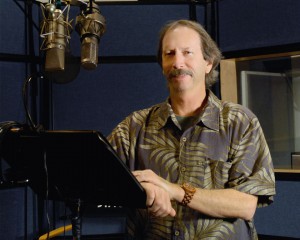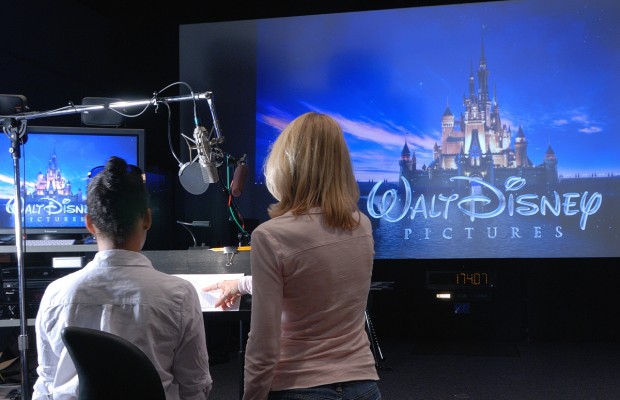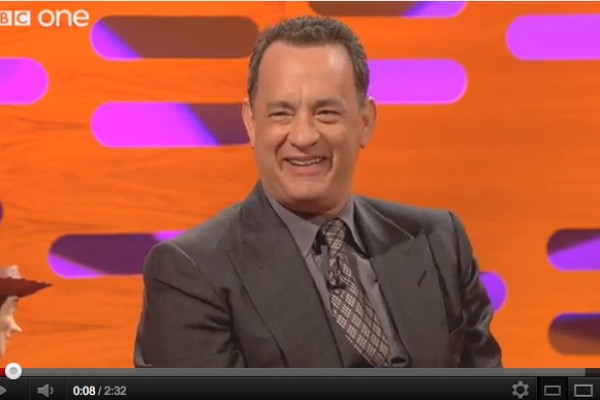What has three letters, many aliases and is of major significance to the sound community? You guessed it: ADR aka Automated Dialog Replacement aka Additional Dialog Recording aka Dubbing aka Looping. All of these monikers are understood as the process of re-recording dialog that cannot be salvaged from a production. To make one thing clear, there is nothing automated about it. ADR is an art. And here to tell us more about the art is an artist whose name also has only three letters and many aliases but nonetheless has made a significant impact on the sound community.
His name is Doc Kane but most just call him Doc. With over 300 projects under his belt and a slew of awards and nominations, including four Academy Award nominations, Doc has one of the longest and most impressive resumes in the sound business. Re-recording for over 35 years, Doc has worked with hundreds of talented actors including Tom Cruise, Ellen DeGeneres, Johnny Depp, Brad Pitt and Robin Williams to name a few. He is also the trusted ADR mixer for dozens of legendary filmmakers such as: Tim Burton, James Cameron, Clint Eastwood and Taylor Hackford. Never one to toot his own horn, Doc is known as one of the best in the industry, his name alone drumming up praise and admiration from his colleagues and clients alike.
Getting a Sound Education
Doc started off as a drummer in a band in high school with three other friends. “I was a lousy drummer and couldn’t read music,“ Doc says, “but one day I was messing around with my Dad’s tape deck and learned how to make the four of us sound like eight of us.” Doc’s experimentation with “over-dubbing” sparked an interest in recording and post production that he never knew he had.
Fortunately for Doc, one of his teachers in high school was good friends with Paul Hager, the head of Post Production at Paramount Pictures. “Every Friday afternoon, we would drive down to Paramount,” Doc recalls, “we would get off of school early and head to Stage M, where they were scoring.
The first thing I ever saw scored was Lady Sings the Blues. It was the first time I had been on a scoring stage. From that day on, I said ‘this is exactly what I want to do.’ That is what inspired me to get into professional recording.”- Doc Kane
The first thing I ever saw scored was Lady Sings the Blues. It was the first time I had been on a scoring stage. From that day on, I said ‘this is exactly what I want to do.’ That is what inspired me to get into professional recording.” What started off as an interest in re-recording music quickly evolved into a zeal for re-recording film as Doc watched Lady Sings the Blues come to life by way of sound. Still in high school, Doc took advantage of the relationship with Hager, professed his love for recording and asked for a job. Hager connected Doc to Richard Einfeld, a sound industry veteran who trained young people in post production, and insisted that Doc work on getting into the union, an entirely foreign concept to the sound student. Doc contacted Einfeld right away and was offered a job after graduation. This is where Doc learned what film sound really was.
“Film sound and recording during that time was totally different,” Doc remembers, “In film sound you had your single stripe, magnetic recorders, 3 track magnetic recorders and there was no 2 inch 24 track audiotape. He (Einfeld) taught me how to make transfers from one medium to the next. He taught me about recordable magnetic-sprocketed film. I saw those machines for the first time and went, ‘what in the heck are those!’ Then he taught me about sync and how film and sound get married together in the editing room and how dailies worked. So that was my first professional recording lesson.”
Through his relationship with Einfeld, Doc met several key people who would impact his career in sound. One such person was Frank Warner, the famed Supervising Sound Effects Editor who won an Academy Award for SFX on Close Encounters of the Third Kind. Einfeld was also responsible for cataloguing and maintaining Warner’s sound effects library. Warner’s son, Mark Warner, became a close friend of Doc’s. Mark and Doc worked together to help design one of the first tape-based editing systems for renowned director, Hal Ashby. This would be Doc’s first experience working side by side with a major film director. As a matter of fact, it was through Hal Ashby’s company that Doc became a member of the Union. “After receiving my Union card,” Doc says, “that was my ticket to work at any major motion picture studio.” Several years later, Doc was offered a job at Warner Hollywood under the management of Don Rogers. Doc would spend the next five years learning the art of Foley, ADR and re-recording at Warner.
The Fork in the Road
With the Walt Disney Company for over 24 years now, Doc has spent some of the most meaningful years of his career at Disney on Stage B. Stage B, known as Disney’s premier “Dialogue Stage” is where all of the character voices of Disney’s classic films are recorded. Notable films include: Lady and the Tramp, Peter Pan, Alice in Wonderland, Cinderella, Sleeping Beauty and The Jungle Book.
Doc recalls how he got his start at Disney. While Warner was building Doc’s sound foundation, Doc got the chance to work with Jacobus Rose on a few sound projects. Not long after the introduction, Rose was appointed head of the Sound Department at Disney. During that time, Michael Eisner and Jeffrey Katzenberg were refurbishing the studio. “They were renovating everything from the mill to the sound department,” Doc remembers. Doc asked Rose what sound opportunities there were at Disney. Rose brought him in to discuss on a Friday night at 8pm, and as they passed ADR Stage B, a client ran out with issues on the evening’s mix. Doc was asked to come in the following Monday to offer a solution to the issue. He jumped at the opportunity and handled the client so well on Monday that he was asked to come back to work on several Disney projects. For a while, Doc held both posts, at Disney and Warner Hollywood. When demand for Doc and scheduling became a big conflict, he was asked to choose. “I had to choose Disney,” he asserts. “It was a time when the studio was invested in trying new and exciting things and I wanted to be a part of that.” Doc has been at the Studio ever since and has become a big part of the Disney Magic.
The Art of ADR
“There is a short list of people I don’t ever want to live without in my professional life, and Doc is at the top of the list. From my first experience with him on Beauty and the Beast to my last session with him a few weeks ago, he’s simply the best and always makes us sound good.”- Don Hahn, Producer Beauty and the Beast, The Lion King and many others
The art of ADR is much more than having a collection of microphones and knowing how to use them, although Doc’s mic cabinet is pretty impressive. It’s also more than having the latest and greatest hardware and software, but rest assured, Doc has all of the most modern bells and whistles.Perhaps even more important and some might even argue that it qualifies ADR as an art, is the sensitivity to the client. Over the years, Doc has worked with almost every big name actor you can imagine and just as many directors and producers. We got the opportunity to talk with several people who have worked with Doc over the years and witness his rapport with the client. Renowned film producer Don Hahn raves about Doc. “There is a short list of people I don’t ever want to live without in my professional life,” Don says, “and Doc is at the top of the list. From my first experience with him on Beauty and the Beast to my last session with him a few weeks ago, he’s simply the best and always makes us sound good.”
When someone is the best, they sometimes exhibit arrogant behavior, but not Doc Kane. His warmth, humor and professionalism is palpable – he’s a total class act.”Academy Award winning director, Taylor Hackford refers to Doc as the best loop recordist in the business. “I’ve worked with Doc on five of my feature films,” Hackford expounds, “and each time I’ve been amazed by his ability to re-capture the ambience and authenticity of the original production track. His secret: ‘Mic Placement’ – that uncanny ability to position his microphones around an actor to perfectly match the original source recording. When someone is the best, they sometimes exhibit arrogant behavior, but not Doc Kane. His warmth, humor and professionalism is palpable – he’s a total class act.”- Taylor Hackford, Director An Officer and A Gentleman, Ray and the upcoming Parker
Steve Boze is the Chief Engineer and commands the engineering team that direcly supports Disney Digital Studio services has worked with Doc since the start of his career at Disney. Boze has seen firsthand Doc’s evolution into the beloved mixer that he is today. “Watching Doc work is like watching a concert pianist,” Steve muses, “His hands fly effortlessly over the console with such grace and confidence you would think he had rehearsed this piece a hundred times.” In reality, Doc is responding to the immediate demands of the talent and client with an almost clairvoyant sense of what will be requested next.
Doc credits his success to the team working behind the scenes, especially Dawn Biro who schedules ADR, Jeannette Browning his dedicated recordist and Steve Boze at the Walt Disney Studios. “It really comes down to those three,” Doc confesses. “Dawn keeps us working, Jeannette keeps the wheels on and Steve keeps us in the future.” The common denominator with all three is creativity. Doc takes incredible pride in the fact that the team at Disney never rests on their laurels and continues to be cutting edge and a step ahead of the competition. “They are innovative in their approach,” Doc says, “It’s not one size fits all with these guys. They make every project their own.”
Steve Boze sums up what makes Doc so successful and Stage B such as special place, “On top of his mastery of the technical process, he also quietly guides the clients through the session with a calm voice and enthusiastic, professional attitude. Even the most difficult actors and directors are no match for Doc’s confident, bedside manner. Stage B is truly “The House that Doc built”.”
- Tom Hanks talks about the fact that the voice of Woody for toys and games is sometimes actually the voice of his brother, Jim. He tells a story about what it is like working on Stage B when he is recording the voice of Woody for the Toy Story films.



